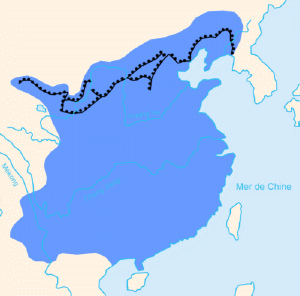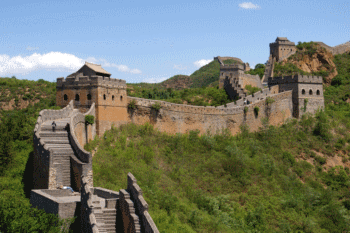 SKC Films Library SKC Films Library |
|
|
| SKC Films Library >> General and Old World History >> Asia >> China >> Regions, Provinces, Etc., A-Z |
| Great Wall of China the world's longest human-made structure The Great Wall of China stretches over 4,000 miles from Shanhaiguan in the east to Lop Nur in the west, and there are another 160+ miles of wall that are not connected to the main wall; modern estimates say the Great Wall once stretched about 5,000 miles in total. Despite many common myths to the contrary, the Great Wall of China cannot be seen from the Moon, and can only be seen from the International Space Station if the viewer knows exactly where to look and what to look for. map of the Great Wall under the
Ming Dynasty The first Great Wall was actually a series of defensive fortifications built during the Warring States Period (about 500-220 BC). Qin Shi Huang, the first Emperor of a unified China, joined the northernmost of those defensive walls into one long, continuous wall between 220 and 200 BC; this wall was located much farther north than the one known by tourists today. Qin Shi Huang's wall was expanded and improved during the Han Dynasty (206 BC-220 AD), and again during the Five Dynasties and Ten Kingdoms Period (1138-1198). These walls were typically built using whatever material was available -- compacted earth, clay bricks, limestone, etc. Most of the wall familiar to modern tourists was built during the Ming Dynasty (1368-1644), with most activity following the Ming's defeat by the Oirats (Monguls) at the Battle of Tumu in 1449. This wall was built almost entirely of brick, with tamped earth between each facing wall. Watchtowers and signal towers were located at fairly regular intervals, allowing men along the wall to pass messages from one end of the Empire to the other with relative speed and ease. Barracks and administrative centers were located at more infrequent intervals. At one time, over one million men were posted along the Great Wall. The Great Wall kept invaders out of China until 1644, when a general who was disillusioned with the Ming Dynasty literally opened the gates to the Manchus at Shanhaiguan in 1644. Once the Manchus gained control over China and extended her borders the Great Wall became irrelevant and all new building and repair projects came to an end. Very little of the Ming version of the Great Wall still stands, but that which does provides a good idea of just how massive and impressive it was in its heyday. The Great Wall of China was declared a UNESCO World Heritage Site in 1987. part of the Great Wall of China
SOURCES |
| SKC Films Library >> General and Old
World History >> Asia >> China >> Regions, Provinces, Etc.,
A-Z This page was last updated on May 07, 2017. |

